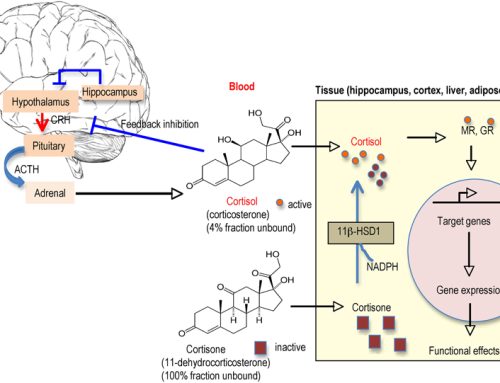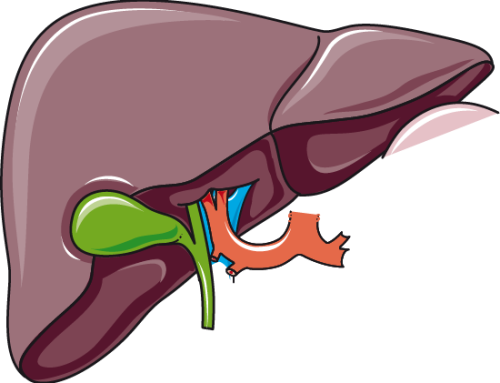OVERVIEW
The human reaction to stress is designed as a survival mechanism for the body. Your adrenal glands sit on top of the kidneys and secrete important hormones (cortisol, adrenaline, and DHEA) to help you to buffer stress and adapt to everyday life demands. The stress response is a complex cascade of hormonal interactions that exert a profound effect on many physiologic systems to help protect us from internal (illness) or external (sabre-toothed tiger) danger. Unfortunately, in today’s world, rather than a single fight-or-flight episode, such as running from a dangerous animal, our body is faced with a multitude of smaller but more chronic stressors such as unstable blood sugar levels, less than 8 hours of sleep, bad traffic or excessive workload. We also suffer from perceived stress, our mental interpretation of an event, such as a wedding, which causes identical stimulation to our nervous system without ever truly being “dangerous”.
Despite man’s many advances, our neurochemical and hormonal reactions to stress, (the Hypothalamic-Pituitary-Adrenal or HPA-axis), have not changed greatly since our caveman days. Designed for acute stressors that resolve rapidly, our present-day, chronic, low-grade stress results in the continual release of CRH (Corticotrophin Releasing Hormone) from the hypothalamus, that area in the lowest region of the forebrain, primarily concerned with survival. This chronic secretion causes dysfunction in the HPA axis, desensitizing the hypothalamic and pituitary receptors to negative feedback from adrenaline, noradrenaline and particularly, cortisol. In this state, the hypothalamus also loses its ability to coordinate incoming information from the areas that control emotional behavior, motivation and control of the internal and external environment – the limbic system, reticular areas, thalamus, amygdala and hippocampus. This loss of control creates exaggerated neurochemical, emotional and physical responses within the SNS (Sympathetic Nervous System), exacerbating HPA dysregulation. Loss of negative feedback within the neuro-hormonal system creates a multitude of ailments and conditions.
HPA AXIS LAB TESTING
- Dutch Test by Precision Hormones
- Adrenal hormone rhythm: to identify which phase of adrenal dysfunction.
- Melatonin Rhythm: to identify circadian rhythm disturbances.
- Micronutrients: to check for deficiencies
- I use the Nutrieval by Genova Diagnostics
- Blood labs to check
- Vitamin D
- Vitamin B12
- Folate
- Upgraded Formulas Hair Minerals Testing to check for minerals and metals.
- Thyroid panel to check for thyroid dysfunction
- TSH
- Free T4
- T4
- Free T3
- T3
- Reverse T3
- Thyroid antibodies (TPO, Thyroglobulin antibodies)
- Hormone testing to check for stress related imbalances:
- AM Cortisol (go before 9 am)
- Testosterone
- Sex hormone binding globulin
- Estradiol
- Progesterone
- DHEA-S
- Microbiome testing: to check for dysbiosis (I use the GI effects by Genova Diagnostics). Stress can directly affect gut health and poor gut health can cause stress on the body.
- Food intolerances or allergies. I use Elisaact or Cyrex labs to identify food intolerances.
STAGES OF HPA AXIS DYSFUNCTION
The term Adrenal Fatigue can in many ways be misleading, because the problem is not in the adrenals but the brain. Furthermore, there are various stages of this condition where hormone and neurotransmitter levels can fluctuate dramatically. In order to correctly interpret the lab tests used to detect Hypothalamic Pituitary Adrenal Dysfunction, we need to fully understand the way that the body’s systems interact during each of these stages. Only then can we pinpoint the stage of dysfunction that we are in, and begin an appropriate treatment plan.
PHASE I: Beginning the ‘Alarm’ phase
This stage describes the body’s immediate reaction to a stressor. This stressor can be an imminent physical threat, or something as simple as a job interview or hospital stay.
- During this first phase of the stress reaction, the body is capable of making significant amounts of the hormones that you need to mount a response.
- This stage is characterized by elevated or trending high first morning cortisol levels.
- During this stage you will likely benefit from a state of increased arousal and alertness. However, sleep patterns may begin to suffer and you may feel intermittent tiredness. Individuals rarely report their symptoms during this phase, and in fact many of us go in and out of Stage One multiple times throughout our lives. People often feel energized but in an edgy “wired” way.
PHASE I: Continuing the ‘Alarm’ phase
As the stress response continues, so does your body’s reaction to it. The body diverts resources needed to produce the sex hormones are to production of stress hormones like cortisol.
- During this second stage, your endocrine system is still fairly well equipped to produce the hormones that you need, but your levels of DHEA and other sex hormones may start to drop.
- This stage is characterized by abnormal cortisol peaks. Sometimes you see this in an elevated first morning cortisol. In other individuals, their cortisol peaks early, flattens out, but often has midday or early evening rise. In some people cortisol peaks at night (reversed curve) leading to insomnia, insulin resistance and abdominal weight gain.
- During this stage you will start to feel the effects of over-exertion of your adrenals. Many people wake up early in the morning (often around 3am) and are unable to fall back asleep. Later in the day some stressor kicks in, and they feel more awake. A common feeling is that of being “wired but tired”, where you are maintaining alertness when you need it during the day, but then crashing hard in the evening. Many sufferers begin to develop an unhealthy dependence on coffee during this stage.
- Make sure to check for stress warning signals and to start recovery practices here or you will progress to the following phses.
PHASE III: The ‘Resistance’ phase
During this stage, your endocrine system continues to focus on producing stress hormones at the expense of sex hormones. This means that you will start to see substantial drops in hormones like DHEA and testosterone become imbalanced. At this point, the individual is still able to function, hold a job and continue a pretty normal life. However, he is experiencing lower levels of many important hormones and this can make a significant difference to his quality of life.
- This stage is characterized by exhaustion regardless of hours slept, a flat cortisol curve, and in some cases low DHEA and thyroid hormone levels.
- Typical symptoms might include regular tiredness, a lack of enthusiasm, regular infections and a lower sex drive. This phase might continue for several months or even years.
PHASE IV: The ‘Burnout’ phase
After some time the body simply runs out of ways to manufacture stress hormones, and cortisol levels finally begin to drop. Now, the levels of both the sex hormones and the stress hormones are low. Levels of neurotransmitters are often also low. This is what is sometimes called ‘burnout’, and it is what happens when we finally crash after a long period of coping with stress.
- This stage is also characterized by subnormal cortisol levels, a flat cortisol curve, and in some cases low DHEA and thyroid hormone levels.
- During this final stage of Adrenal Fatigue, an individual can suffer from extreme tiredness, lack of sex drive, irritability, depression, anxiety, weight loss, apathy and disinterest in the world around him. In fact, this general hormonal insufficiency has important implications for almost every part of the body. To recover from Stage Four Adrenal Fatigue requires significant time, patience and often and complete change in lifestyle.
- Check this burnout questionnaire for symptoms and make sure you do everything you can to slow down completely and adjust your lifestyle for full healing.
If you want to learn more about how to tackle burnout, check out my next post on my HPA axis protocol. You can also learn more about HPA Axis Dysfunction in the following articles:
- From Work Well-Being to Burnout: A Hypothetical Phase Model
- Adrenal Fatigue or HPA Axis Dysregulation?
- Understanding HPA Axis Dysfunction (Hint: It’s Not Adrenal Fatigue)



